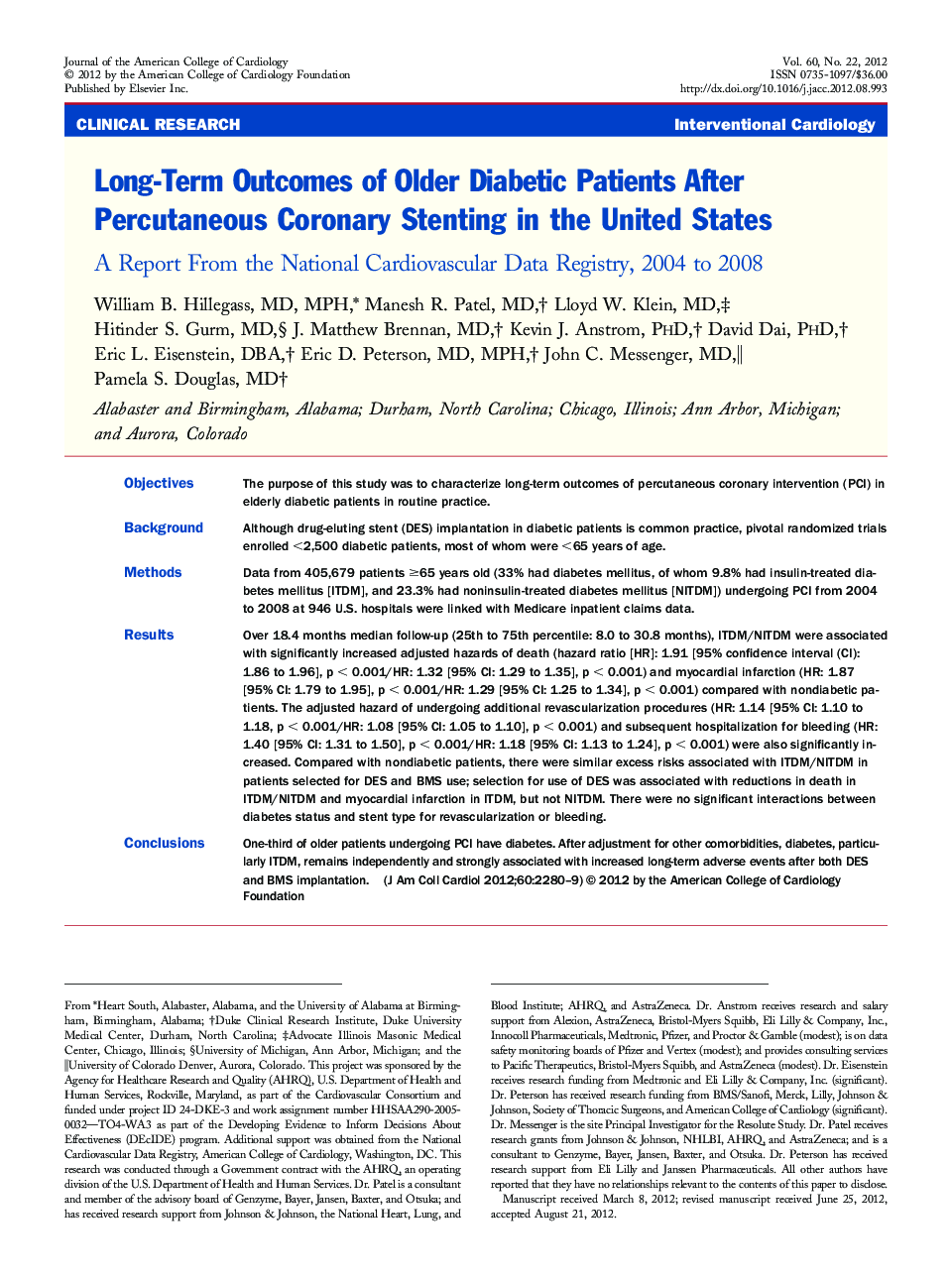| کد مقاله | کد نشریه | سال انتشار | مقاله انگلیسی | نسخه تمام متن |
|---|---|---|---|---|
| 2946656 | 1577183 | 2012 | 10 صفحه PDF | دانلود رایگان |

ObjectivesThe purpose of this study was to characterize long-term outcomes of percutaneous coronary intervention (PCI) in elderly diabetic patients in routine practice.BackgroundAlthough drug-eluting stent (DES) implantation in diabetic patients is common practice, pivotal randomized trials enrolled <2,500 diabetic patients, most of whom were <65 years of age.MethodsData from 405,679 patients ≥65 years old (33% had diabetes mellitus, of whom 9.8% had insulin-treated diabetes mellitus [ITDM], and 23.3% had noninsulin-treated diabetes mellitus [NITDM]) undergoing PCI from 2004 to 2008 at 946 U.S. hospitals were linked with Medicare inpatient claims data.ResultsOver 18.4 months median follow-up (25th to 75th percentile: 8.0 to 30.8 months), ITDM/NITDM were associated with significantly increased adjusted hazards of death (hazard ratio [HR]: 1.91 [95% confidence interval (CI): 1.86 to 1.96], p < 0.001/HR: 1.32 [95% CI: 1.29 to 1.35], p < 0.001) and myocardial infarction (HR: 1.87 [95% CI: 1.79 to 1.95], p < 0.001/HR: 1.29 [95% CI: 1.25 to 1.34], p < 0.001) compared with nondiabetic patients. The adjusted hazard of undergoing additional revascularization procedures (HR: 1.14 [95% CI: 1.10 to 1.18, p < 0.001/HR: 1.08 [95% CI: 1.05 to 1.10], p < 0.001) and subsequent hospitalization for bleeding (HR: 1.40 [95% CI: 1.31 to 1.50], p < 0.001/HR: 1.18 [95% CI: 1.13 to 1.24], p < 0.001) were also significantly increased. Compared with nondiabetic patients, there were similar excess risks associated with ITDM/NITDM in patients selected for DES and BMS use; selection for use of DES was associated with reductions in death in ITDM/NITDM and myocardial infarction in ITDM, but not NITDM. There were no significant interactions between diabetes status and stent type for revascularization or bleeding.ConclusionsOne-third of older patients undergoing PCI have diabetes. After adjustment for other comorbidities, diabetes, particularly ITDM, remains independently and strongly associated with increased long-term adverse events after both DES and BMS implantation.
Journal: Journal of the American College of Cardiology - Volume 60, Issue 22, 4 December 2012, Pages 2280–2289